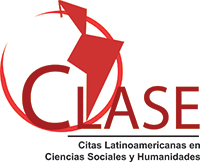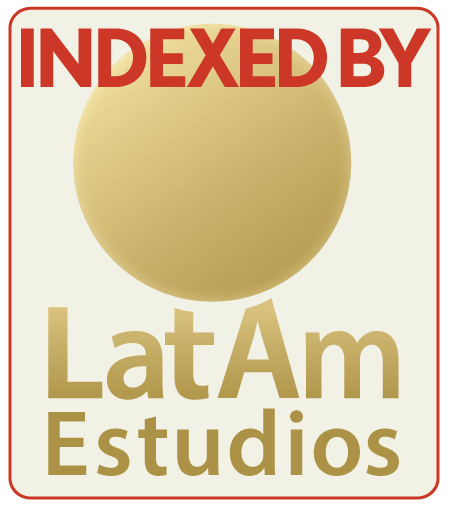Chemoperception of the primary taste sensations of taste in the adult students of Specialty in Gerontology
Abstract
Improving eating habits in adulthood avoids losing the perception of flavors, which was notable in this research, among other benefits. The abuse of processed foods generates changes in the taste buds, which can result in a loss of appetite, resulting in inadequate nutrition and a decrease in quality of life. The different flavors perceived, such as the basic flavor of food, are detected by the papillae of the tongue, evaluating two aspects: a) taste perception and b) intensity of flavors, which were tested by the people who submitted, with prior consent, to the identification of discriminative tests of four different flavors; The ranking comparison consisted of people listing a series of samples in descending order of the basic flavors. From the main results, it stands out that 25% of people report having difficulty appreciating the sour taste and, while another 25% report having an affinity for perceiving bitter and sweet flavors more easily; Thus, the comparison of the sensory tests applied shows that not all adults perceive and detect flavors equally.
Downloads
References
Barriga, M. (2019). La bioquímica y fisiología del sabor. Revista de Educación Bioquímica (REB), 38(4), 100-104. Recuperado de https://www.medigraphic.com/pdfs/revedubio/reb-2019/reb194c.pdf
Cárdenas, N., Cevallos C., Salazar, J., Romero, E., Gallegos, P., y Cáceres, M. (2018). Uso de pruebas afectivas, discriminatorias y descriptivas de evaluación sensorial en el campo gastronómico. Revista científica dominio de la ciencia, 4(3), 253-263. Recuperado de https://dialnet.unirioja.es/servlet/articulo?codigo=6560198
Cascales, R. F. (2020, diciembre 5). La psicología de la salud desde una perspectiva de ciclo vital. Recuperado de http://www.aniorte-nic.net/apunt_psicolog_salud_11.htm
Cavavaugh, K. Y. (2020, diciembre 1). Las etapas del desarrollo. Portal Académico UNAM. Recuperado de https://portalacademico.cch.unam.mx/repositorio-de-sitios/experimentales/psicologia2/pscII/MD1/MD1-L/etapas_desarrollo.pdf
Cedeño, A. V. (2015). Diseño de área para análisis sensorial con reestructuración en la metodología aplicada de evaluación para materias primas, semi elaborados y producto terminado de una industria láctea de Guayaquil (Trabajo final para la obtención del título de Ingeniero en Alimentos). Escuela
Superior Politécnica del Litoral, Guayaquil, Ecuador.
Colorado Peralta, R., y Rivera, J. M. (2014, 26 de agosto). Química del sabor. Diario de Xalapa. Sección Cultura: Ciencia y Luz. Recuperado de https://www.uv.mx/cienciauv/files/2014/08/Quimica-del-Sabor-00.pdf
Del Ángel, A.R., Interián, L. y Esparza, R. (2013). Principios básicos de bromatología para estudiantes de nutrición. Palibrio LL. https ://www.amazo.co.mx/Pri-Básico-B-Estudiantes -Nut/dp /1463361
Elida, V. G., Francisco, G. R., Juan, R. G., & Emmanuel, O. S. (2018, diciembre 2). Pruebas sensoriales. Universidad Autónoma del Estado de Hidalgo. https://uaeh.edu.mx
Enríquez, H. C. (2008, diciembre 2). Evaluación sensorial (Tesis de maestría). Instituto Politécnico Nacional. Recuperado de https://tesis.ipn.mx/bitstream/handle/123456789/14592/HAYDEE%20VERA%20INFORME%20FINAL.pdf?sequence=1&isAllowed=y
González Carnero, J., Montaña Migúelez, J. d., y Míguez Bernárdez, M. (2002). Estudio de la percepción de sabores dulce y salado en diferentes grupos de la población [Study into the perception of sweet and salt tastes in different population groups]. Nutr. hosp., 17(5), 256-258. Recuperado de https://pesquisa.bvsalud.org/portal/resource/pt/ibc-14733
Juárez-Hernández, E., Barbero, V., López, A., González, L., Ramos, M., Méndez, N., Uribe, M., y Chávez, N. (2015). Valores de normalidad de umbrales de percepción y reconocimiento de sabores básicos en población mexicana sana. Medicina Sur, 22(1), 4-10. Recuperado de https://www.medigraphic.com/cgi-bin/new/resumen.cgi?IDARTICULO=59336
Manfugás, J. E. (2007). Evaluación sensorial de los alimentos. Universidad de la Habana. Recuperado de https://www.academia.edu/31142430/Evaluaci%C3%B3n_Sensorial_de_los_Alimentos
Monreal-Gimeno, C. M. (2001). El adulto: Etapas y consideraciones para el aprendizaje. Eúphoros, 3(1), 97-112. Recuperado de https://dialnet.unirioja.es/servlet/articulo?codigo=1183063
Osorio, P. (2010). La edad mayor como producción sociocultural. Dialnet, 1(22), 30-35. Recuperado de https://dialnet.unirioja.es/servlet/articulo?codigo=5242924
Pinilla Cárdenas, M., Ortiz, M., y Suárez, J. (2021). Adulto mayor: Envejecimiento, discapacidad, cuidado y centros día. Revisión de tema. Salud Uninorte, 37(2), 488-505. DOI: 10.14482/sun.37.2.618.971
Reglero, G. y Hernández, M. (2 de diciembre de 2011). Curso de análisis sensorial de alimentos. Obtenido de consejo superior de investigaciones científicas. Recuperado de https://www.cva.itesm.mx/biblioteca/pagina_con_formato_version_oct/apaweb.html
Rico Hernández, M.-L. (2011). La malnutrición como causa y consecuencia de distorsiones sensoriales. Nutrición Hospitalaria, 4(2), 25-30. Recuperado de https://www.redalyc.org/articulo.oa?id=309226781006

This work is licensed under a Creative Commons Attribution 4.0 International License.
In order to promote the development and dissemination of research in education in Latin America, the Ibero-American Journal for Educational Research and Development (RIDE) adhered to the Budapest Open Access Initiative, which is why it is identified as a Open access publication. This means that any user can read the complete text of the articles, print them, download them, copy them, link them, distribute them and use the contents for other purposes. Creative Cummons licenses allow users to specify the rights to use an open access journal available on the Internet in such a way that users know the rules of publication. Authors who publish in this journal accept the following conditions: Authors they keep the author's rights and give the magazine the right of the first publication, with the work registered with the attribution license of Creative Commons, which allows third parties to use the published material whenever they mention the authorship of the work and the first publication in this The authors can make other independent and additional contractual agreements for the non-exclusive distribution of the version of the article published in this journal (eg, include it in an institutional repository or publish it in a book) as long as they clearly indicate that The work was published for the first time in this magazine. Authors are allowed and recommended to publish their work. low on the Internet (for example on institutional or personal pages) before and during the review and publication process, as it can lead to productive exchanges and to a greater and faster dissemination of the published work















